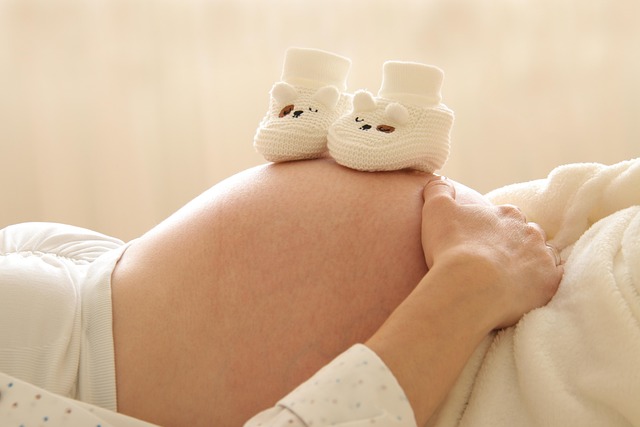For years, I had been living with endometriosis without even realizing it. When Emily received her diagnosis in her early 30s, it was both a shock and a relief. Having spent years on the contraceptive pill, which masked her symptoms, she only recognized something was wrong when she and her partner decided to start a family.
Meet Emily and Alex
Emily, a 33-year-old Drama Teacher from Surrey, first met Alex, a Farrier in the Armed Forces, when she was just 19. They reconnected in 2019 and realized they were meant to be together. The couple tied the knot in August 2020 and soon began trying to conceive.
Seeking Help
After eight months of unsuccessful attempts, they reached out to the NHS for guidance. “I remember them asking a lot about my periods,” Emily shared. “I always had painful periods, especially in the first couple of days, along with heavy bleeding, back pain, and bloating. Unfortunately, society often tells women that painful periods are normal, so it’s easy to overlook the signs that something might be wrong.”
Having been on the contraceptive pill for most of her adult life, Emily didn’t connect her symptoms to endometriosis until they started trying to have children. An internal scan revealed a cyst on her ovary, which was attributed to the condition.
Understanding Endometriosis
So, what is endometriosis? It’s a condition where cells similar to those in the uterine lining grow outside of it, commonly affecting the ovaries and pelvis but can also impact the bladder and bowel. The exact cause remains unknown, but it affects about 10% of women in the UK. While many women with endometriosis can conceive naturally, it may take longer, and some will require fertility treatments.
“When I got the diagnosis, I felt a whirlwind of emotions. I was shocked but also relieved because we finally had an explanation for our struggles. It felt like we could finally take action,” Emily explained.
Taking Action
In March 2022, Emily underwent a laparoscopy to remove endometrial cysts and tissue. “I went into it not knowing what to expect. It was my first major surgery, and it was tough because Alex was busy with his training at the time, so I had to recover on my own.”
Typically, recovery from a laparoscopy takes about two weeks, but for Emily, it was longer since more tissue needed to be removed than anticipated. “The recovery was more challenging than I thought, and I wasn’t ready to drive or return to my job as a Drama Teacher.”
The IVF Journey
After her surgery, they received NHS funding for one cycle of IVF, but the paperwork took nearly a year to process. “The waiting game was agonizing. We had to learn to be patient and set smaller goals to manage the stress,” she recalled.
Emily and Alex began their treatment at TFP Fertility in May 2023. During the egg collection, it became evident that Emily had responded exceptionally well to the medication, resulting in 40 eggs being retrieved, 35 of which were mature. However, the specialists were concerned about the risk of ovarian hyperstimulation syndrome (OHSS), a rare but serious complication.
“I remember feeling uncomfortable and heavy, like I was carrying a bowling ball,” she said. To allow her body time to recover, they opted for a frozen embryo transfer. Out of 16 fertilized eggs, four developed into healthy embryos that were frozen for future use.
“Although it was disappointing to face another wait, we decided to enjoy this summer together, just the two of us,” Emily said. “It was the right choice for my recovery, and knowing we were taking the best path gave me peace of mind.”
The Joy of Parenthood
Three months later, Emily and Alex were ready for the embryo transfer. They thawed a single grade A embryo, which resulted in the birth of their son, Charlie, in April 2024. “I was so weak during the process. I took a test on day three and it was negative, but day seven showed a positive result. It was surreal!”
During her pregnancy, Emily experienced a break from her endometriosis symptoms, but soon after Charlie was born, she resumed taking the pill to manage her pain. “You think that once you’re diagnosed and have the surgery, everything will be fine. You don’t realize the journey doesn’t end there,” she reflected.
Looking Ahead
Currently, there’s no cure for endometriosis, but pain can be managed with hormone treatments and laparoscopic surgery. If you’re seeking guidance, it’s wise to consult your GP for the best options for you.
With three frozen embryos, Emily and Alex are contemplating whether to try for another child. “It’s a significant commitment, both physically and emotionally, and there’s always uncertainty about the outcome,” she noted. However, they feel reassured knowing they can always reach out for support. “Having a team that understands both the practical and emotional aspects made all the difference.”
Further Reading
If you’re interested in more fertility stories, check out this one of our other blog posts. For those curious about home insemination options, you might find the cryobaby kit from Make a Mom useful. Additionally, for a comprehensive understanding of pregnancy week by week, visit March of Dimes, which is an excellent resource.
Conclusion
In summary, Emily’s journey highlights the challenges of living with endometriosis and the emotional rollercoaster that can accompany fertility treatments. Her story is one of resilience, hope, and the importance of support in navigating the path to parenthood.

